Description
***THIS IS NOT THE ACTUAL BOOK. YOU ARE BUYING the Test Bank in e-version of the following book***
– The Test Bank is what most professors use an a reference when making exams for their students, which means there’s a very high chance that you will see a very similar, if not exact the exact, question in the test!
– The file is either in pdf, doc, rtf or zipped in the package and can easily be read on PCs and Macs.
– Delivery is INSTANT. You can download the files IMMEDIATELY once payment is done.
We also faced similar difficulities when we were students, and we understand how you feel.
But now, with the Test bank for Adolescence and Emerging Adulthood 5th 0205911854, you will be able to
* Anticipate the type of the questions that will appear in your exam.
* Reduces the hassle and stress of your student life.
* Improve your studying and also get a better grade!
* Get prepared for examination questions.
* Can save you time and help you understand the material.
This is the quality of service we are providing and we hope to be your helper.
Delivery is in the next moment. Test Bank is accurate.
If you have any questions, or would like a receive a sample chapter before your purchase, please contact us at inquiry@testbankcorp.com
Chapter 1: Multiple Choice
1.1.01. Suppose you are a 9-year-old boy under Plato’s tutelage. What would you most likely be studying?
a. Philosophy and Greek art
b. Sports and music
c. Geography and history
d. Math and science
Difficulty: 3 Question ID: 1.1.01 Page Reference: 4
Topic: Adolescence in Ancient Times
Skill: Applied
Answer: b. Sports and music
1.1.02. Plato, Aristotle, and Saint Augustine all described adolescence as a period that focuses on the struggle between
a. reason and passion.
b. math and science.
c. storm and stress.
d. individualism and globalization.
Difficulty: 2 Question ID: 1.1.02 Page Reference: 5
Topic: Adolescence in Ancient Times
Skill: Conceptual
Answer: a. reason and passion.
1.1.03. The Children’s Crusade in the Middle Ages was composed mostly of
a. children younger than 10.
b. mothers and infants.
c. young people in their teens.
d. emerging adults.
Difficulty: 1 Question ID: 1.1.03 Page Reference: 5
Topic: Adolescence From Early Christian Times Through the Middle Ages
Skill: Factual
Answer: c. young people in their teens.
1.1.04. Life-cycle service in the U.S. faded during the 18th and 19th centuries because
a. individualism was on the rise.
b. the plague killed most eligible workers.
c. people were having fewer children.
d. the economy became more industrialized.
Difficulty: 2 Question ID: 1.1.04 Page Reference: 6
Topic: Adolescence from 1500 to 1890
Skill: Factual
Answer: d. the economy became more industrialized.
1.1.05. Social control institutions such as the YMCA “sprung up” in the 1800s as a response to
a. increased rates of social problems among young people.
b. the beginning of the child study movement.
c. increased individualism among youths.
d. growing urbanization.
Difficulty: 2 Question ID: 1.1.05 Page Reference: 6
Topic: Adolescence from 1500 to 1890
Skill: Conceptual
Answer: a. increased rates of social problems among young people.
1.1.06. In the 1800s, an increase in social problems among young people may have been due in part to
a. moving to the cities with no family ties.
b. the advent of social agencies such as the YWCA.
c. a decrease in school attendance.
d. an increase in agricultural industry.
Difficulty: 2 Question ID: 1.1.06 Page Reference: 6
Topic: Adolescence from 1500 to 1890
Skill: Conceptual
Answer: a. moving to the cities with no family ties.
1.1.07. Imagine you are a 13-year-old boy living in the United States in 1902. You most likely would be
a. going to secondary school.
b. attending college.
c. working in a coal mine, factory, or farm.
d. raising a family.
Difficulty: 3 Question ID: 1.1.07 Page Reference: 7
Topic: The Age of Adolescence, 1890-1920
Skill: Applied
Answer: c. working in a coal mine, factory, or farm.
1.1.08. Everyday in the media we see, read, and hear about countries becoming more industrialized. We refer to these countries as
a. developing.
b. the West.
c. individualized.
d. majority cultures.
Difficulty: 2 Question ID: 1.1.08 Page Reference: 7
Topic: The Age of Adolescence, 1890-1920
Skill: Conceptual
Answer: a. developing.
1.1.09. Socioeconomic status refers to a person’s
a. social class.
b. geographical area.
c. economies of scale.
d. majority culture.
Difficulty: 1 Question ID: 1.1.09 Page Reference: 7
Topic: The Age of Adolescence, 1890-1920
Skill: Factual
Answer: a. social class.
1.1.10. Leanne’s father is a criminal lawyer and her mother is a surgeon. They live in an urban neighborhood with a diversity of cultures. Leanne would be considered
a. high SES.
b. middle class.
c. low SES.
d. spoiled.
Difficulty: 3 Question ID: 1.1.10 Page Reference: 7
Topic: The Age of Adolescence, 1890-1920
Skill: Applied
Answer: a. high SES.
1.1.11. One of the important changes in Western countries, which began to define the “Age of Adolescence,” was
a. restrictive child labor laws.
b. the advent of social control agencies.
c. the teachings of Plato and Aristotle.
d. increasing industrialization.
Difficulty: 2 Question ID: 1.1.11 Page Reference: 6
Topic: The Age of Adolescence, 1890-1920
Skill: Conceptual
Answer: a. restrictive child labor laws.
1.1.12. New requirements for children to attend secondary school were crucial in establishing the characteristics of
a. child labor laws.
b. life-cycle service.
c. modern adolescence.
d. emerging adulthood.
Difficulty: 1 Question ID: 1.1.12 Page Reference: 6
Topic: The Age of Adolescence, 1890-1920
Skill: Factual
Answer: c. modern adolescence.
1.1.13. G. Stanley Hall is credited as the initiator of the
a. inventionist movement.
b. child labor laws.
c. social control agencies.
d. child study movement.
Difficulty: 1 Question ID: 1.1.13 Page Reference: 8
Topic: The Age of Adolescence, 1890-1920
Skill: Factual
Answer: d. child study movement.
1.1.14. When conducting survey research, why would one need to make sure the sample is “stratified”?
a. Because random sampling is problematic
b. To correspond properly to ethnographic research
c. As a symbol of quantitative investigations
d. To fairly represent the population of interest
Difficulty: 2 Question ID: 1.1.14 Page Reference: 9
Topic: Adolescence and Emerging Adulthood
Skill: Conceptual
Answer: d. To fairly represent the population of interest
1.1.15. Phoenix, a research assistant, is going to “draw names out of a hat” to select research participants for his study. Phoenix would be
a. choosing a random sample.
b. circumventing the proper protocol.
c. stratifying the sample.
d. doing a qualitative research study.
Difficulty: 2 Question ID: 1.1.15 Page Reference: 9
Topic: Adolescence and Emerging Adulthood
Skill: Conceptual
Answer: a. choosing a random sample.
1.1.16. When G. Stanley Hall defined adolescence, he felt it applied to young people aged
a. 5-15.
b. 10-18.
c. 14-24.
d. 14-30.
Difficulty: 1 Question ID: 1.1.16 Page Reference: 9
Topic: Adolescence and Emerging Adulthood
Skill: Factual
Answer: c. 14-24.
1.1.17. Helen is 10 years old. According to the modern conception of adolescence, Helen would be considered
a. a child.
b. an early adolescent.
c. a young person.
d. an emerging adult.
Difficulty: 1 Question ID: 1.1.16 Page Reference: 12-13
Topic: Adolescence and Emerging Adulthood
Skill: Applied
Answer: b. an early adolescent.
1.1.18. Which statement best characterizes the main difference between adolescence and emerging adulthood?
a. Adolescents are more independent of their families.
b. Emerging adults are prone to flights of fancy.
c. Adolescents are more likely to be in long-term relationships.
d. Emerging adults are more independent of their parents.
Difficulty: 1 Question ID: 1.1.18 Page Reference: 10
Topic: Adolescence and Emerging Adulthood
Skill: Factual
Answer: d. Emerging adults are more independent of their parents.
1.1.19. According to the text, there are five characteristics that distinguish emerging adulthood from other age periods. Which characteristic does NOT describe emerging adulthood?
a. Age of identity exploration
b. Age of stability
c. Self-focused age
d. Age of possibilities
Difficulty: 1 Question ID: 1.1.19 Page Reference: 10
Topic: Adolescence and Emerging Adulthood
Skill: Factual
Answer: b. Age of stability
1.1.20. Cory is a 20-year-old woman who is not sure about leaving home, about going to college, or about dating Mike. Cory would be considered in a stage of
a. storm and stress.
b. exploration.
c. individualism.
d. adolescence.
Difficulty: 3 Question ID: 1.1.20 Page Reference: 10-11
Topic: Adolescence and Emerging Adulthood
Skill: Applied
Answer: b. exploration.
1.1.21. The goal of being self-focused in emerging adulthood is to
a. create a permanent state as individuals enter adulthood.
b. learn to be self-sufficient in adulthood.
c. continue feeling in-between adolescence and adulthood.
d. allow adolescents an opportunity to experience adult life in brief episodes.
Difficulty: 1 Question ID: 1.1.21 Page Reference: 11
Topic: Adolescence and Emerging Adulthood
Skill: Factual
Answer: b. learn to be self-sufficient in adulthood.
1.1.22. When asked about his hopes and expectations for the future, Steve, a 22-year-old American man, would MOST likely agree with the statement
a. “I am very sure that someday I will get to where I want in life.”
b. “My education will directly impact whether I will work in a dreary, dead-end job.”
c. “Knowing 50% of marriages end in divorce, I’m not sure I will have a happy marriage.”
d. “I am sure that I will be married by the time I’m 28 years old.”
Difficulty: 3 Question ID: 1.1.22 Page Reference: 11
Topic: Adolescence and Emerging Adulthood
Skill: Applied
Answer: a. “I am very sure that someday I will get to where I want in life.”
1.1.23. According to the text, which statement BEST characterizes emerging adulthood as the age of possibilities?
a. This timeframe is viewed as beginning with the first noticeable changes of puberty.
b. One feature of this age is emerging adults’ reliance on parents’ decisions.
c. Typically emerging adults have left their families but not committed to new relationships.
d. Most emerging adults face dreary, dead-end jobs, bitter divorces, and disappointment.
Difficulty: 2 Question ID: 1.1.23 Page Reference: 11
Topic: Adolescence and Emerging Adulthood
Skill: Conceptual
Answer: c. Typically emerging adults have left their families but not committed to new relationships.
1.1.24. While experimentation and exploration characterize the age period between 18-25, one must caution that
a. experimentation creates storm and stress in a young person’s life.
b. not all young adults experiment and explore.
c. all young people will experience the same feelings.
d. experimentation and exploration need to be curbed.
Difficulty: 2 Question ID: 1.1.24 Page Reference: 11
Topic: Adolescence and Emerging Adulthood
Skill: Conceptual
Answer: b. not all young adults experiment and explore.
1.1.25. Which scenario best summarizes the ambiguity felt by emerging adults?
a. Tim feels like he never wants to grow up.
b. Kari doesn’t know what to wear to school today.
c. Mallory feels in-between – not quite adolescent, not quite adult.
d. Logan wants to know what life was like for his parents.
Difficulty: 2 Question ID: 1.1.25 Page Reference: 11
Topic: Adolescence and Emerging Adulthood
Skill: Conceptual
Answer: c. Mallory feels in-between – not quite adolescent, not quite adult.
1.1.26. Jason is a well-adjusted, happy adolescent. According to Anna Freud, Jason has
a. become a productive member of society.
b. built up excessive defenses against his own drives and desires.
c. accumulated past experiences and uses them to calm himself.
d. overcome the stereotype of storm and stress in his life.
Difficulty: 3 Question ID: 1.1.26 Page Reference: 12-13
Topic: The “Storm and Stress” Debate
Skill: Applied
Answer: b. built up excessive defenses against his own drives and desires.
1.1.27. Emerging adulthood only exists in cultures where young people are allowed to
a. postpone entering adult roles.
b. date beginning in early adolescence.
c. drink alcohol.
d. attend college for free.
Difficulty: 1 Question ID: 1.1.27 Page Reference: 12
Topic: Adolescence and Emerging Adulthood
Skill: Factual
Answer: a. postpone entering adult roles.
1.1.28. Emerging adulthood is a phenomenon that exists mainly in
a. third world countries.
b. industrialized countries.
c. socialist countries.
d. global countries.
Difficulty: 1 Question ID: 1.1.28 Page Reference: 12
Topic: Adolescence and Emerging Adulthood
Skill: Factual
Answer: b. industrialized countries.
1.1.29. Industrialization has contributed to a growing population of young people
a. reverting to child-like behaviors.
b. finding careers early in life.
c. never getting married or having children.
d. postponing adult roles.
Difficulty: 1 Question ID: 1.1.29 Page Reference: 12-13
Topic: Adolescence and Emerging Adulthood
Skill: Factual
Answer: d. postponing adult roles.
1.1.30. Which statement concerning the developmental period known as emerging adulthood is most accurate?
a. Most adolescents do not move through the emerging adulthood period.
b. It is a period marked by experimentation and exploration.
c. Emerging adulthood is a period reserved for children with high SES.
d. It is best described in terms of Hall’s theory of storm and stress.
Difficulty: 2 Question ID: 1.1.30 Page Reference: 10-11
Topic: Adolescence and Emerging Adulthood
Skill: Conceptual
Answer: b. It is a period marked by experimentation and exploration.
1.1.31. With regard to the notion of “storm and stress” first coined by G. Stanley Hall, a modern psychologist is most likely to believe
a. completely in Hall’s definition of storm and stress.
b. that storm and stress is derived entirely from peer pressure.
c. a “modified” version of storm and stress.
d. that storm and stress is purely biological.
Difficulty: 2 Question ID: 1.1.31 Page Reference: 12-13
Topic: The “Storm and Stress” Debate
Skill: Conceptual
Answer: c. a “modified” version of storm and stress.
1.1.32. Adolescence is generally viewed as beginning with the
a. first signs of pubertal changes.
b. transition from elementary to high school.
c. thirteenth birthday.
d. attainment of an integrated identity.
Difficulty: 1 Question ID: 1.1.32 Page Reference: 9
Topic: The Transition to Adulthood
Skill: Factual
Answer: a. first signs of pubertal changes.
1.1.33. For emerging adults, the age of identity explorations is best described by what following scenario?
a. Celeste still feels like a kid but wants her parents to treat her like a grown up.
b. Tony is exploring love and work choices as he decides what he wants to do.
c. Brian has always known he wants to be a small business owner.
d. Peggy moved to eight different apartments with different roommates in two years.
Difficulty: 3 Question ID: 1.1.33 Page Reference: 10
Topic: Adolescence and Emerging Adulthood
Skill: Applied
Answer: b. Tony is exploring love and work choices as he decides what he wants to do.
1.1.34. Nineteen-year-old William believes that he “became an adult” when he got a job, moved out of his parents’ house, and became responsible for “paying his way” and making his own life decisions. William’s definition of adulthood best reflects the
a. inexperience of youth.
b. legacy of the industrial revolution.
c. interdependent values of Western society.
d. individualistic values of the American majority culture.
Difficulty: 3 Question ID: 1.1.34 Page Reference: 14-15
Topic: The Transition to Adulthood
Skill: Applied
Answer: d. individualistic values of the American majority culture.
1.1.35. Learning to stand alone as a self-sufficient person without relying on anyone else is considered
a. collectivism.
b. individualism.
c. interdependence.
d. correlation.
Difficulty: 1 Question ID: 1.1.35 Page Reference: 14
Topic: The Transition to Adulthood, American Style
Skill: Factual
Answer: b. individualism.
1.1.36. How would Eva (a young emerging adult from Argentina) differ in her criteria for adulthood from either Adrian (a young American), Mara (an Israeli girl), or Twan (a young South Korean boy)? Unlike the others, Eva knows
a. accepting responsibility is key to adulthood.
b. that being able to support a family financially is important.
c. completing military service is an important sign of adulthood.
d. when she becomes an adult she will support her parents financially.
Difficulty: 3 Question ID: 1.1.36 Page Reference: 15
Topic: The Transition to Adulthood: Other Perspectives
Skill: Applied
Answer: b. that being able to support a family financially is important.
1.1.37. According to anthropological research, in most traditional, non-Western cultures, a person attains adult status with
a. employment.
b. the completion of post-secondary education.
c. marriage.
d. the completion of military service.
Difficulty: 1 Question ID: 1.1.37 Page Reference: 15
Topic: The Transition to Adulthood
Skill: Factual
Answer: c. marriage.
1.1.38. The view that marriage is the key transition to adulthood is characteristic of
a. cultures that value interdependence more than independence.
b. people raised in large families.
c. cultures that face economic hardship.
d. individuals who engaged in early dating behavior as adolescents.
Difficulty: 2 Question ID: 1.1.38 Page Reference: 15
Topic: The Transition to Adulthood
Skill: Conceptual
Answer: a. cultures that value interdependence more than independence.
1.1.39. Which statement best reflects conclusions about traditional cultures based on anthropologists’ observations? A person is considered an adult
a. when old enough to vote.
b. after marriage.
c. with the development of self-control.
d. after finishing college.
Difficulty: 1 Question ID: 1.1.39 Page Reference: 15
Topic: The Transition to Adulthood
Skill: Factual
Answer: b. after marriage.

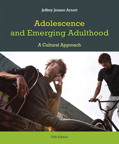
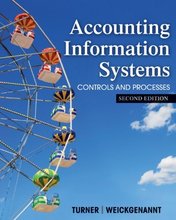
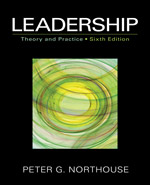
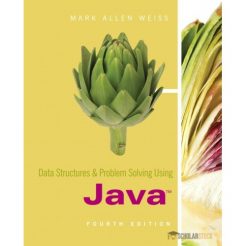
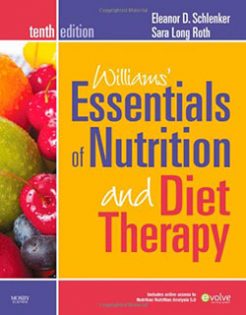

Reviews
There are no reviews yet.